Papers by Stephan Glatzel

Lake Neusiedl, a shallow brackish lake of Austria and Hungary, is the westernmost steppe lake of ... more Lake Neusiedl, a shallow brackish lake of Austria and Hungary, is the westernmost steppe lake of Europe with an area of ca. 320 km² and the second largest coherent reed population in Europe. Half of Lake Neusiedl consists of a wetland ecosystem dominated by Phragmites australis, which forms a seasonally varying mosaic of water, reed and sediment patches, is highly sensitive to climate variations and which we investigated here.Little is known about the effects of climate change on reed dominated wetlands and the contribution of central European reed belts as a source of greenhouse gases (GHG). The current ongoing drought periods at Lake Neusiedl affect especially the water balance but also the carbon fluxes in the reed belt. Therefore, we investigated the drought influenced carbon and water fluxes and their drivers of the reed ecosystem of a brackish lake over the last three years.We used the eddy covariance (EC) technique to continuously quantify the vertical turbulent GHG exchange ...
Journal of Plant Nutrition and Soil Science
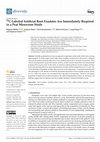
Diversity
Globally, peatlands have been recognized as important carbon sinks while only covering approximat... more Globally, peatlands have been recognized as important carbon sinks while only covering approximately 3% of the earth’s land surface. Root exudates are known key drivers of C cycling in soils and rhizosphere priming effects have been studied extensively in terrestrial ecosystems. Their role for decomposition of peat still remains unclear, as little research about their fate and potential priming effects in peat exists. In this study, we aimed to evaluate pathways of root exudates and their short-term priming effects by daily determination of stable carbon isotope fluxes of CO2 and CH4. As the drainage of peatlands strongly alters processes of decomposition, we included measurements after drainage as well. Results revealed the immediate respiration of root exudates in peat, mainly as CO2, while CH4 release was associated with a lag time of several days. However, the largest proportion of added root exudates remained in the solid and liquid phase of peat. In conclusion, our findings su...

<p>Wetlands dominated with common reed (<em&... more <p>Wetlands dominated with common reed (<em>Phragmites australis</em>) can store carbon due to photosynthetic assimilation of carbon dioxide and sequestration of organic matter produced in the wetland soil or release it by emission of sediment-produced methane (CH<sub>4</sub>). On an annual timescale about 15 % of the net carbon fixed by wetlands may be released to the atmosphere as CH<sub>4</sub>. However, little is known about the effects of climate change on central European wetland ecosystems with reed and the quantification of the different pathways of CH<sub>4</sub> emissions in reed belts and their underlying processes.</p><p>With an area of approximately 181 km², the reed belt of Lake Neusiedl is the second largest coherent reed population in Europe after the Danube delta and forms a mosaic of water, reed and sediment patches, which varies between the seasons. Lake Neusiedl is the largest lake of Austria and the westernmost steppe lake of Europe with no natural outflow. It is a saline and very shallow lake with water levels of maximal 1.5 m but can differ strongly between the shorelines due to strong winds. Due to its shallowness, the lake is very sensitive to climate variations.</p><p>To investigate the different pathways of CH<sub>4</sub> emissions, 24-hour measurement campaigns were conducted in the reed belt near the Biological Station Illmitz on the east side of Lake Neusiedl every 3 months (seasonally) in 2021.</p><p>Various chamber measurement systems were used to capture the different pathways of CH<sub>4</sub> emissions in the reed belt: Ebullition traps for the <em>ebullition of gas bubbles</em> from supersaturated sediments, floating chambers for the <em>molecular diffusion transport</em> <em>at the water-atmosphere interface</em>, soil chambers for the <em>molecular diffusion transport at the soil-atmosphere interface</em> and vegetation chambers for the <em>plant-mediated transport</em> <em>of</em> <em>P. australis</em>.</p><p>Methane concentrations and stable carbon isotope values of methane (<em>δ</em><sup>13</sup>C-CH<sub>4</sub>) and carbon dioxide (<em>δ</em><sup>13</sup>C-CO<sub>2</sub>) were measured with an isotope measurement technique of Cavity Ring Down Spectroscopy (Picarro G2201-i). The <em>δ</em><sup>13</sup>C-CH<sub>4 </sub>can be used to differentiate biological and geological sources of CH<sub>4</sub> emissions and to examine the mechanisms of CH<sub>4</sub> production and oxidation. Additionally, sediment and water samples were taken every campaign and analysed for various parameters such as TOC, sulphate, nitrate, ammonium and phosphate.</p><p>Here, we quantify the different pathways of CH<sub>4</sub> emissions, evaluate the underlying factors being responsible for seasonal variations and examine the differences in diurnal pattern.</p><p>Preliminary results indicate (1) the highest CH<sub>4</sub> emissions in the summer season, (2) a significant difference in CH<sub>4</sub> fluxes between each emission pathway per season, (3) that only the <em>δ</em><sup>13</sup>C-CH<sub>4 </sub>values from the ebullition pathway differs clearly from all other pathways and (4) that the…
EGU General Assembly Conference Abstracts, Apr 1, 2018
Carbon (C) loss from managed organic soils is an important flux in the global carbon cycle. Diffe... more Carbon (C) loss from managed organic soils is an important flux in the global carbon cycle. Different approaches exist to estimate greenhouse gas emissions and thus the C balance of these soils.
The rewetting of drained peatlands is widely regarded as an adequate measure for the mitigation o... more The rewetting of drained peatlands is widely regarded as an adequate measure for the mitigation of greenhouse gas emissions. Therefore, especially in NE Germany, many peatlands are being rewetted. Our knowledge about greenhouse gas exchange associated with rewetting is mainly based on short-term experiments or space-for-time substitutions. These approaches do not consider the transient character of ecosystem acclimatization to flooding by rewetting. Moreover data in this regard on coastal peatland ecosystems are sparse.
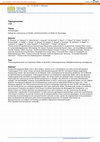
Entwasserte organische Boden sind in vielen Landern, darunter auch in Deutschland, eine starke Qu... more Entwasserte organische Boden sind in vielen Landern, darunter auch in Deutschland, eine starke Quelle anthropogener Treibhausgase (THG). Daher mussen sie bei der Berichterstattung gemas UNFCCC und Kyoto-Protokoll angemessen berucksichtigt werden. Hier beschreiben wir die Methodik, Daten und Ergebnisse der deutschen detaillierten Tier-3-Methodik zur Berichterstattung anthropogener Treibhausgasemissionen aus entwasserten organischen Boden, die fur das deutsche Treibhausgasinventar entwickelt und angewandt wurden. Der Ansatz basiert auf nationalen Daten und bietet das Potenzial, Anderungen der Landnutzung und des Wassermanagements zu verfolgen, falls Zeitreihen zu relevanten Aktivitatsdaten vorliegen. Die Aktivitatsdaten umfassen hochauflosende Karten zu Klima, Landnutzung, organischen Boden und vom mittleren jahrlichen Grundwasserflurabstand. Die Grundwasserkarte wurde durch ein statistisches Modell aus Daten von > 1000 Standorten abgeleitet. Die THG-Emissionen beruhen auf einem ei...
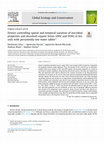
Global Ecology and Conservation, 2021
Factors controlling dissolved organic carbon (DOC) and nitrogen (DON) production in degraded fen ... more Factors controlling dissolved organic carbon (DOC) and nitrogen (DON) production in degraded fen peatlands remains largely equivocal. Thus, the purpose of this research was to determine whether short-term changes in DOC and DON content and microbial properties are related to variations in weather conditions, soil properties and human activity. The study was conducted in May and September 2017-2019 to determine the seasonal variations in the abovementioned parameters in soil layers (0-30 cm) of a long-term agricultural peatland additionally affected by open-pit mining. We found that the most critical environmental factors that shape microbial community structure and activity are air temperature and precipitation, which explained 59.9% of the variability. Air temperature was also the most important explanatory factors for DOC and DON variation, which explained 18.9% of the total variability. Moreover, in the case of DOC and DON production, significant positive correlations with soil organic carbon content (DOC r = 0.46, p < 0.01; DON r = 0.54, p < 0.001) was found. The potential impact of open-pit mines on the DOC and DON production was not confirmed, as there was no significant difference between sites located in the depression cones (caused by lignite mining) and those sites affected exclusively by agriculture drainage. This work hopes to contribute towards a deeper understanding of the variables and dependencies that affect the production of labile organic forms in degraded fen peatland soils in the temperate climate zone.
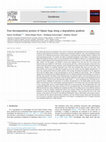
Geoderma, 2020
The carbon sink function of peatlands is the result of a relatively small imbalance between bioma... more The carbon sink function of peatlands is the result of a relatively small imbalance between biomass production and decay and proposed to be sensitive to changes in environmental conditions. Thus, peat decomposition plays a decisive role in determining the future carbon balances of peatlands under changing climatic conditions and increasing human pressure. To evaluate the effects of peatland degradation on the degree of decomposition in light of deviating site histories and to reveal interrelations between different indicators, we analysed peat depth profiles of physicochemical peat decomposition proxies across nine study sites in two valley bogs in the Eastern Alps, Austria. For this purpose, we divided 1 m peat cores sampled at the nine sites into 4 cm sections and analysed these peat samples for bulk density, loss on ignition, pH value, carbon and nitrogen content and ratio, stable carbon and nitrogen isotope signatures, and five humification indices based on Fourier transform infrared spectroscopy. Besides, we regularly measured water levels and incubated litter bags over two years. Peat characteristics were found to be relatively homogenous across the treeless and only slightly degraded sites. At these sites, depth profiles followed similar patterns with strongly increasing decomposition in the uppermost layers and the highest degree of peat decomposition at 40-56 cm depths for most proxies. Thus, our findings suggest that even apparently only slightly degraded sites were distinctly affected by past drainages. In contrast to the open peat bog sites, the degree in peat decomposition was distinctly higher at tree-encroached sites and at long-term drained former peat-cutting sites. Both, the distinct difference in the degree of decomposition between the two peatlands and the inverse decomposition depth trends, i.e., more decomposed peat overlying less decomposed layers, highlight the importance of secondary decomposition on the depth profiles and the strong effects of site histories on the current degree of peat decomposition. The results of two-year litter bag incubations of four vascular plant species revealed distinct differences in species-specific litter decomposition rates and considerable differences for same species between the two investigated bogs. The strong interrelations between different humification indices underline the simultaneous effects of proceeding decay on the different chemical properties of the peat. Besides, humification indices were strongly related with other physical and chemical properties of peats and highest loadings on the principal component 1 that accounted for 41% of the total variance of the dataset were found for four different humification indices, bulk density and nitrogen contents. We conclude that the selective preservation of aliphatic, acid and aromatic groups during peat decomposition are well suited to elucidate small-scale differences in the degree of decomposition and to strongly interrelate with established indicators as bulk densities.
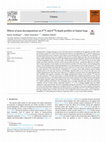
CATENA, 2019
Decomposition of organic substances is one of the main processes responsible for the signatures o... more Decomposition of organic substances is one of the main processes responsible for the signatures of stable carbon and nitrogen isotopes (δ 13 C and δ 15 N) in soils and peats. However, the applicability of δ 13 C and δ 15 N signatures at the natural abundance level as indicators of the degree of peat decomposition is still debatable. We evaluated δ 13 C and δ 15 N depth patterns of peat cores sampled at nine sites in two nearby Alpine peat bogs with varying degree of organic matter degradation. Based on water table depths and past drainage intensities, the peat cores were divided into three degradation classes. We found similar overall depths patterns of δ 13 C and δ 15 N across the nine depth profiles and distinct differences between aerobic and anaerobic peat layers. Considerable differences in stable C and N isotope signatures of same depths were detected between profiles of the three classes, whereas depth profiles of peat cores with similar degree in peatland degradation were nearly identical. In the aerobic peat layers, δ 13 C and δ 15 N increased with depths at all study sites from 2.6‰ to 4.9‰ for δ 13 C and 3.2‰ to 7.0‰ for δ 15 N compared to the initial signatures of the plant biomass. Standardised δ 13 C of aerobic layers differ distinctly between slightly degraded peats at the open peat bog area, intermediately degraded peats at the tree-covered edge areas and strongly degraded peats at the former peat-cutting site. δ 13 C signatures of aerobic layers of strongly degraded peats were markedly more negative compared to the slightly degraded peats because of the selective 12 C losses by microbial respiration. δ 15 N were more positive at strongly degraded than at slightly degraded sites in both, aerobic and anaerobic peat layers. The uniform stable isotope ratios in the anaerobic layers deeper than the local maxima of the isotopic signatures support the assumption that minor 13 C fractionation occurs under anaerobic conditions. δ 13 C slightly declining with depth in the waterlogged layers of strongly degraded peat reflects the preferential utilisation and loss of labile organic compounds enriched in 13 C. δ 15 N of strongly degraded peats was higher compared to well-conserved peat. The close relationship between the measured δ 15 N to δ 15 N modelled based on C:N ratios and bulk densities supports the assumption that the δ 15 N signature is the result of isotopic fractionation by peat decomposition. We conclude that peat decomposition strongly affects the δ 13 C and δ 15 N depth profiles of peat bogs and most likely overrides other factors, such as differences between plant species, litter components, atmospheric δ 13 C shift during peat formation, temperature effects, or type of mycorrhizal symbiosis.
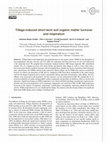
SOIL Discussions, 2016
Tillage induces decomposition and mineralisation of soil organic matter (SOM) by the disruption o... more Tillage induces decomposition and mineralisation of soil organic matter (SOM) by the disruption of macroaggregates and may increase soil CO<sub>2</sub> efflux by respiration, but these processes are not well understood at the molecular level. We sampled three treatments (mineral fertiliser = MF, biogas digestate = BD, unfertilised control = CL) of a stagnic luvisol a few hours before and directly after tillage, and four days later from a harvested maize field in Northern Germany and investigated these samples by pyrolysis-field ionization mass spectrometry (Py-FIMS) and hot-water extraction. Before tillage, BD showed much more volatilised matter (VM) during pyrolysis, indicating an increased amount of SOM. The Py-FIMS mass spectra revealed distinct differences in relative ion intensities of undisturbed soil compared to BD most likely attributable to the cattle manure used for the biogas feedstock and to relative enrichments during anaerobic fermentation. After tillage, t...
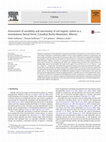
CATENA, 2014
Mountain environments are heterogeneous and dynamic geomorphic environments sensitive to land use... more Mountain environments are heterogeneous and dynamic geomorphic environments sensitive to land use and climate change. Heterogenic environmental conditions result in a large variability of mountain soil properties, and thus in large uncertainties of inventories of soil organic carbon (SOC). In this study we analyzed the variability of soil properties associated with the calculation of a SOC inventory in a mountain environment in the Canadian Rocky Mountains (Alberta). Therefore, we calculated the analytical uncertainty and spatial variability of SOC stocks using Gaussian error propagation and Taylor series expansion along seventeen 36 m long transects to identify major sources of uncertainty. SOC stocks in the upper 10 cm and 30 cm are 2.4 ± 0.7 kg C m −2 and 6.4 ± 5.6 kg C m −2 , respectively. The bulk densities generated the largest uncertainty associated with the analytical precision (10.0%). However, analytical uncertainties (ranging between 2.3 and 24.2%) are much smaller than the uncertainty introduced by the spatial variability, for instance of the coarse fraction (63.8%) and SOC concentration (40.1%). This study contributes to insufficiently considered analysis of uncertainties in SOC stocks and demonstrate the high potential of nested sampling approaches to identify sources of uncertainties of SOC stocks. To reduce the uncertainties associated with heterogeneous mountain environments, we propose to apply more sophisticated statistics (e.g. regression analysis considering frequency distributions of measured coarse fractions in different geomorphic environments) rather than simple mean per unit approaches, as frequently applied in regionalization studies of soil properties.

The Science of the total environment, 2018
Through litter decomposition enormous amounts of carbon is emitted to the atmosphere. Numerous la... more Through litter decomposition enormous amounts of carbon is emitted to the atmosphere. Numerous large-scale decomposition experiments have been conducted focusing on this fundamental soil process in order to understand the controls on the terrestrial carbon transfer to the atmosphere. However, previous studies were mostly based on site-specific litter and methodologies, adding major uncertainty to syntheses, comparisons and meta-analyses across different experiments and sites. In the TeaComposition initiative, the potential litter decomposition is investigated by using standardized substrates (Rooibos and Green tea) for comparison of litter mass loss at 336 sites (ranging from -9 to +26 °C MAT and from 60 to 3113 mm MAP) across different ecosystems. In this study we tested the effect of climate (temperature and moisture), litter type and land-use on early stage decomposition (3 months) across nine biomes. We show that litter quality was the predominant controlling factor in early sta...
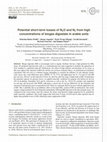
SOIL
Biogas digestate (BD) is increasingly used as organic fertilizer, but has a high potential for NH... more Biogas digestate (BD) is increasingly used as organic fertilizer, but has a high potential for NH 3 losses. Its proposed injection into soils as a countermeasure has been suggested to promote the generation of N 2 O, leading to a potential trade-off. Furthermore, the effect of high nutrient concentrations on N 2 losses as they may appear after injection of BD into soil has not yet been evaluated. Hence, we performed an incubation experiment with soil cores in a helium-oxygen atmosphere to examine the influence of soil substrate (loamy sand, clayey silt), water-filled pore space (WFPS; 35, 55, 75 %) and application rate (0, 17.6 and 35.2 mL BD per soil core, 250 cm 3) on the emission of N 2 O, N 2 and CO 2 after the usage of high loads of BD. To determine the potential capacity for gaseous losses, we applied anaerobic conditions by purging with helium for the last 24 h of incubation. Immediate N 2 O and N 2 emissions as well as the N 2 / (N 2 O+N 2) product ratio depended on soil type and increased with WFPS, indicating a crucial role of soil gas diffusivity for the formation and emission of nitrogenous gases in agricultural soils. However, emissions did not increase with the application rate of BD. This is probably due to an inhibitory effect of the high NH + 4 content of BD on nitrification. Our results suggest a larger potential for N 2 O formation immediately following BD injection in the fine-textured clayey silt compared to the coarse loamy sand. By contrast, the loamy sand showed a higher potential for N 2 production under anaerobic conditions. Our results suggest that short-term N losses of N 2 O and N 2 after injection may be higher than probable losses of NH 3 following surface application of BD.
Mires and Peat, 2017
Foreword to Special Volume entitled 'Growing Sphagnum'.
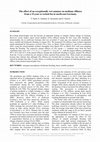
Mires and Peat, 2013
Re-wetting minerotrophic fens has become an important strategy to mitigate climate change in Germ... more Re-wetting minerotrophic fens has become an important strategy to mitigate climate change in Germany. However, recent studies report raised methane (CH4) effluxes during the first years after flooding. A minerotrophic fen in north-east Germany that was re-wetted 15 years ago was exposed to exceptionally heavy rainfall and freshwater flooding in August 2011. We measured CH4 effluxes from wetland vegetation stands dominated by Phragmites australis (Cav.) Trin. ex Steud., Typha latifolia L. and Carex acutiformis Ehrh., using the closed-chamber method, fortnightly from March 2011 to March 2012 with extra sampling during the flooding. The respective annual effluxes of CH4 (mean ± 1 standard error) from the three vegetation types were 18.5 ± 1.3, 21.1 ± 1.2 and 47.5 ± 5.0 g m a, with the August effluxes contributing 40 %, 50 % and 10 % of the annual effluxes. Despite the freshwater flooding in August, annual CH4 effluxes from the 15-year re-wetted fen are similar to those reported from pr...










Uploads
Papers by Stephan Glatzel